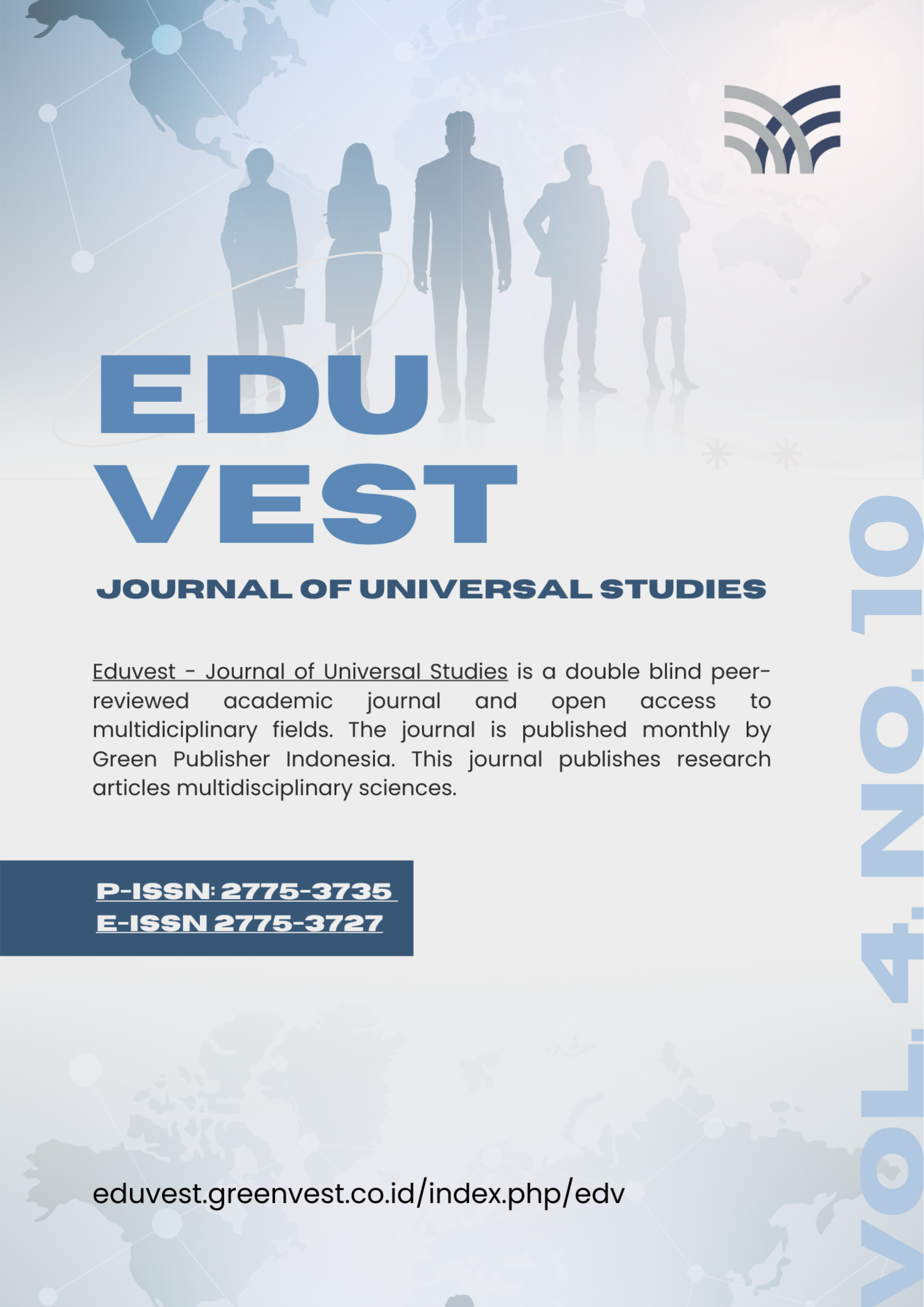Vertigo as Initial Symptom of Cerebellar Hemorrhage in Adult Woman : A Case Report
DOI:
https://doi.org/10.59188/eduvest.v4i9.3782Keywords:
vertigo, cerebrovascular disease, cerebellar hemorrhageAbstract
Vertigo, difficulty walking, and loss of balance/coordination are among the symptoms of stroke in 50% of stroke cases. Vertigo due to cerebrovascular disease is generally associated with other neurological signs such as cranial nerve abnormalities, hemiparesis, facial weakness, diplopia, hyperesthesia, and Horner's syndrome. A 42-year-old woman came to the emergency department with complaints of dizziness, nausea, and frequent vomiting for the previous 4 hours. The symptoms are also accompanied by a feeling of tingling on the left side of the face, and the left eyelid cannot open optimally. The patient has a history of uncontrolled hypertension. The HINTS test revealed central vertigo, and the patient also found dysdiadochokinesis, ataxia, and dysmethria. A non-contrast head CT scan showed ICH in the left cerebellum with a volume of 6.9 cc. Based on the results of these examinations, the patient was diagnosed with cerebellar hemorrhage. The blood supply to the brainstem, cerebellum, and inner ear comes from the vertebrobasilar vascular system. Blockage or rupture of blood vessels in one of the main branches of this system can cause symptoms of vertigo. Symptoms of vertebrobasilar stroke vary widely and depend on which of the three main circumferential branches is affected; posterior inferior cerebellar artery, anterior inferior cerebellar artery, or superior cerebellar artery. Vertigo in patients who have risk factors for stroke accompanied by other neurological symptoms should be considered for a thorough neurological examination to evaluate the possibility of cerebrovascular disease.
References
Armato, E., Ferri, E., Pinzani, A., & Ulmer, E. (2014). Cerebellar haemorrhage mimicking acute peripheral vestibulopathy: the role of the video head impulse test in differential diagnosis. Acta Otorhinolaryngologica Italica, 34(4), 288.
Chakor, R. T., & Eklare, N. (2012). Vertigo in cerebrovascular diseases. Int J Otorhinolaryngol Clin, 4(1), 46–53.
Choi, K.-D., Lee, H., & Kim, J.-S. (2013). Vertigo in brainstem and cerebellar strokes. Current Opinion in Neurology, 26(1), 90–95.
Hsu, Y.-H., Hu, H.-Y., Chiu, Y.-C., Lee, F.-P., & Huang, H.-M. (2016). Association of sudden sensorineural hearing loss with vertebrobasilar insufficiency. JAMA Otolaryngology–Head & Neck Surgery, 142(7), 672–675.
Kim, J.-S., Newman-Toker, D. E., Kerber, K. A., Jahn, K., Bertholon, P., Waterston, J., Lee, H., Bisdorff, A., & Strupp, M. (2022). Vascular vertigo and dizziness: Diagnostic criteria. Journal of Vestibular Research, 32(3), 205–222.
Lalla, R., Malhotra, H. S., Garg, R. K., & Verma, R. (2012). Conservative management in a rare case of spontaneous bilateral cerebellar haemorrhage. Case Reports, 2012, bcr2012006177.
Muthmainnina, A. N., & Kurniawan, S. N. (2022). Tension Type Headache (TTH). Journal of Pain, Headache and Vertigo, 3(2), 41–44.
Pricilia, S., & Kurniawan, S. N. (2021). Central vertigo. Journal of Pain, Headache and Vertigo, 2(2), 38–43.
Shaikh, A. G., & Manto, M. (2019). Vertigo in Cerebellar Disease—Do the Eyes Have It or Is There More to Perceive? In The Cerebellum (Vol. 18, pp. 295–297). Springer.
Strupp, M., Dlugaiczyk, J., Ertl-Wagner, B. B., Rujescu, D., Westhofen, M., & Dieterich, M. (2020). Vestibular disorders: diagnosis, new classification and treatment. Deutsches Ärzteblatt International, 117(17), 300.
Thompson, T. L., & Amedee, R. (2009). Vertigo: a review of common peripheral and central vestibular disorders. Ochsner Journal, 9(1), 20–26.
Wu, Y.-T., Hsieh, M.-F., Chu, H.-Y., Lu, S.-C., Chang, S.-T., & Li, T.-Y. (2010). Recurrent cerebellar hemorrhage: case report and review of the literature. The Cerebellum, 9, 259–263.
Published
How to Cite
Issue
Section
License
Copyright (c) 2024 Dessy Gita Hepsari, Novian Wibowo

This work is licensed under a Creative Commons Attribution-ShareAlike 4.0 International License.











